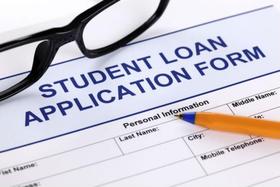The announcement of a significant increase in Stafford loan rates could pose a problem for some community college students. Despite reassurances from Congress that a deal is coming, those looking for ways to pay for their postsecondary education continue to be left in a bind at this point. On the other hand, many community colleges have done away with the Safford loan option for other reasons, and students are finding alternative methods for footing their tuition bills. Check out how community colleges are dealing with the issues involving Stafford loans and finding other ways to help their students financially.
Stafford Loan Rates Doubling?
MPN Now reports that the failure by Congress to address student loan rates has resulted in a doubling of the rates for Stafford loans. Without intercession by lawmakers, students could see rates of 6.8% on loans taken out for the upcoming school year. Last year, those rates were just 3.4%.
The rate hike applies to subsidized Stafford loans, which are those in which the government pays the interest while the student is still attending college. Subsidized Stafford loans make up about one-quarter of all Stafford loans issued. Unfortunately, they are also the loans that typically go to the neediest students.
Susan Romano, director of financial aid at Finger Lakes Community College in New York, told MPN Now that the changes may prompt students to look for other ways to pay for their college education.
“I think it’s going to make families think twice about loans, especially here at a community college,” Romano explained. “It will make people possibly more conservative. Just because you can take one out doesn’t mean you need to.”
The July 1 deadline that came and went without a decision by Congress to extend the lower rate was one that lawmakers had known about for a full year. The decision was never a priority for Congress, despite promises on both sides to extend the 3.4% rate for another year. Now, Congress has reconvened and is looking at the issue once again. Lawmakers are attempting to reassure students and their parents that rate relief is on the way, but it’s not a done deal yet.
Default Rates another Concern for Community Colleges
In the meantime, community colleges are making decisions on whether to participate in the federal student loan program. In addition to the interest rate hike, schools are concerned about another growing problem linked to these loans.
Student loan default rates are on the rise at many community colleges nationwide. According to a report at Clintonnc.com, high default rates can impact a school’s ability to participate in federal loan programs. In addition, the rates could affect the availability of federal grant money.
To prevent high default rates from impacting a schools ability to land other types of financial aid, some community colleges have opted to do away with the Stafford loan program altogether. Students at those schools will not be impacted by the changes to loan rates, since these types of financing aren’t available to students in the first place.
Sampson Community College Offers Alternatives to Stafford Loans
Clintonnc.com also reports that Sampson Community College is one school that has not offered Stafford loans since 1998. Since that time, Sampson has been joined by 25 other community colleges in the state. Another eight North Carolina schools will be opting out of the loan program for the upcoming school year.
Judy Tarte, director of financial aid at Sampson Community College, explains that students find other options for footing the bill for their education when federal loan programs are not provided. For example, the mere decision to attend community college for two years of a four-year education can save a student tens of thousands of dollars in tuition costs for those first two years.
“My son completed his first two years at Sampson Community College for approximately $4,000, and transferred to NC State University as a junior, which saved approximately $40,000,” Tarte said. “This proves first-hand that it cost a lot less to attend a community college, and students receive a good quality education as well.
In addition, schools like Sampson may receive other types of federal aid, such as Pell grants and Supplemental Opportunity grants. Schools may also be able to offer some types of scholarships to students, which can also help pay the cost of higher education.
Other Schools Opting Out
According to the Lake County News, Yuba Community College District in California is also suspending the Federal Student Loan Program, due to high default rates at colleges in the district. During the previous school year, the majority of students at Yuba College and Woodland Community College pursued other methods for paying for their education. College administrators will continue to work with students to help them find alternative means of paying for school.
Southeastern Community College is another North Carolina school that has suspended the Federal Direct Student Loan Program, citing an increasing loan default rate. The suspension of the loans will begin with the upcoming school year. Students will still be able to apply for non-federal private student loans and/or scholarships, according to WECT. The school also offers a payment plan to help students pay their tuition bills.
This video offers another take on Stafford Loans.
Paying for higher education has become a major obstacle for some students seeking a degree today. The increase in Stafford loan rates has highlighted the problem without providing a viable solution. Fortunately, students attending community colleges can find affordable ways to foot the bill for their education, often without relying on federal student loans to do so.
Questions? Contact us on Facebook. @communitycollegereview















